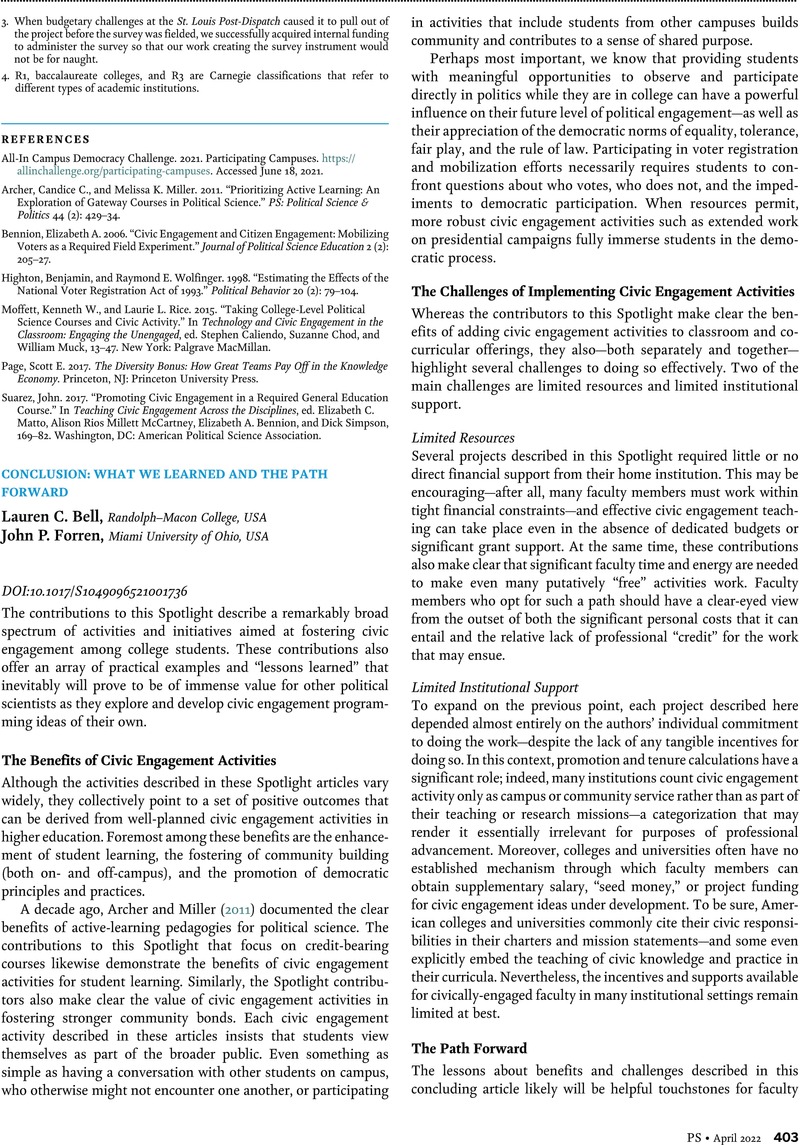Crossref Citations
This article has been cited by the following publications. This list is generated based on data provided by Crossref.
Rackaway, Chapman
2024.
Civic Pedagogies: Teaching Civic Engagement in an Era of Divisive Politics.
p.
373.



